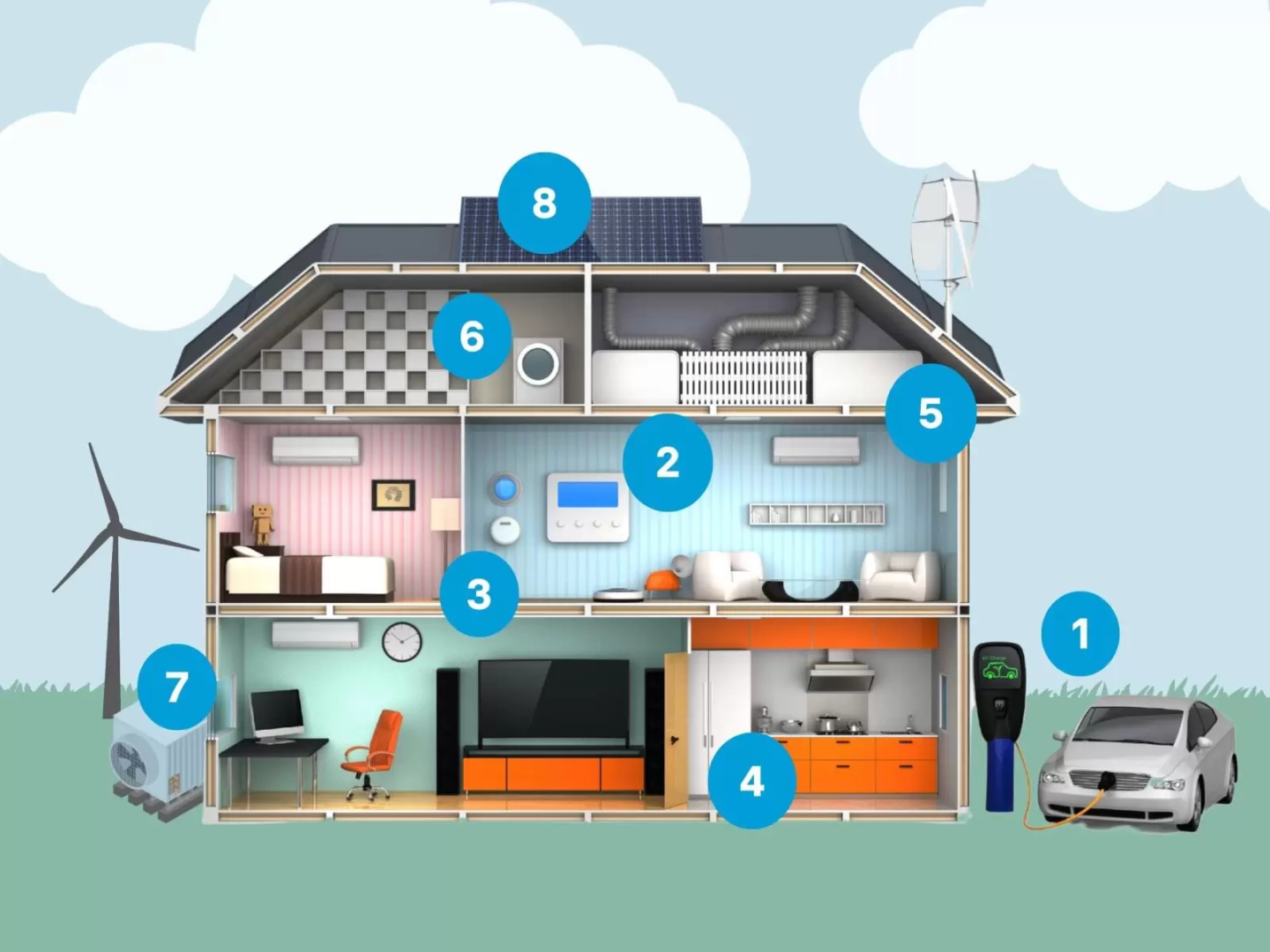8 ways the Inflation Reduction Act can save you money
The historic climate law funds multiple energy-saving measures.
Editor's note: As of February 18, 2025, the tax credits included in this article were still available to consumers. It requires an act of Congress to change or cancel federal tax credits. However, due to recent actions by the Trump administration, the availability of the rebates is unclear. Contact your state's energy office to find out more.
What if you could fight climate change and save money at the same time? Thanks to the rebates and tax credits included in the Inflation Reduction Act, you can.
Here are eight places around your home where you could start saving money.

1. In the driveway
The law rewards qualifying electric vehicle buyers with a tax credit of up to $4,000 on the purchase of a used EV and up to $7,500 for a new car. As of 2024, the credit was issued through dealerships at the time of sale — and since some models already sell for less than $30,000 — it makes EVs cheaper than ever, especially when you consider that the average household spends hundreds of dollars per month on gasoline. There are caveats. For example, battery materials can't come from certain countries, so some models don't qualify.
2. At your thermostat
Natural gas prices have taken consumers on a wild ride over the past few years, with some households facing astronomical heating bills during winter storms. The clean energy incentives in the Inflation Reduction Act tackle this problem by supporting a grid-wide move to cheaper, cleaner sources of electricity, reducing both the cost to consumers and pollution. That means a typical American household will save up to $220 per year over the next decade without having to change a thing.
3. In the utility room
To green your home’s infrastructure, the law also offers rebates to help defray upfront costs, prioritizing funds for families with low and moderate incomes. For example, some consumers who invest in an energy-efficient heat pump water heater could be eligible for a rebate of up to $1,750. An upgraded breaker box (to help prepare for an all-electric home) may be eligible for a $4,000 rebate. To find out which discounts, rebates and tax credits your household is eligible for, consult this online calculator.
4. In the kitchen
A Stanford University study found that gas stoves leak methane, a potent greenhouse gas, even when they aren’t being used. The researchers estimated that stoves across the U.S. emit as much climate pollution as about 500,000 gas-powered cars. The Inflation Reduction Act provides for a rebate of up to $840 for an electric stove, cooktop, range or oven to make the purchase more affordable.
5. In the insulation
Adding insulation is a tried-and-true way to prevent wasted energy and save money. After the passage of the Inflation Reduction Act, some households became eligible for a rebate of up to $1,600 just for improving their home’s insulation and sealing energy leaks — and that’s on top of the savings better insulation will yield on monthly utility bills. (The rebate for households with moderate incomes covers 50% of these costs). Find out if you can get the rebate here.
6. In the laundry room
Heat-pump clothes dryers, which are popular in Europe, but rarely used in the U.S., are an energy-efficient alternative to traditional dryers. Instead of releasing warm, humid air outside, a heat pump dryer sends moist air through an evaporator, and then recirculates the dry hot air. The process takes a bit longer to dry clothes but only uses about half the electricity. The Inflation Reduction Act encourages consumers to switch to an electric heat pump dryer by funding a rebate of up to $840 for qualified buyers. Check if the rebate is available here.
7. At the AC unit
What if there were a more efficient way to keep your home comfortable? Consider a heat pump. It can both heat and cool your home, and uses less energy overall. Households can qualify for a tax credit of up to $2,000 for the purchase of an electric heat pump. And for households with low incomes, the new law will provide a rebate of up to $8,000 on installation. (For the tax credit program, the incentives apply to equipment installed on January 1, 2023, or later.)
8. On the roof
The Residential Clean Energy Credit provides a tax credit of up to 30% to households that invest in clean energy such as solar, and it’s retroactive to the beginning of 2022. Considering that the average cost of installing a residential rooftop solar-powered system is about $19,000 — that’s $5,700 in savings. Beyond that, the average solar-powered home saves about $300 every year on electricity.


